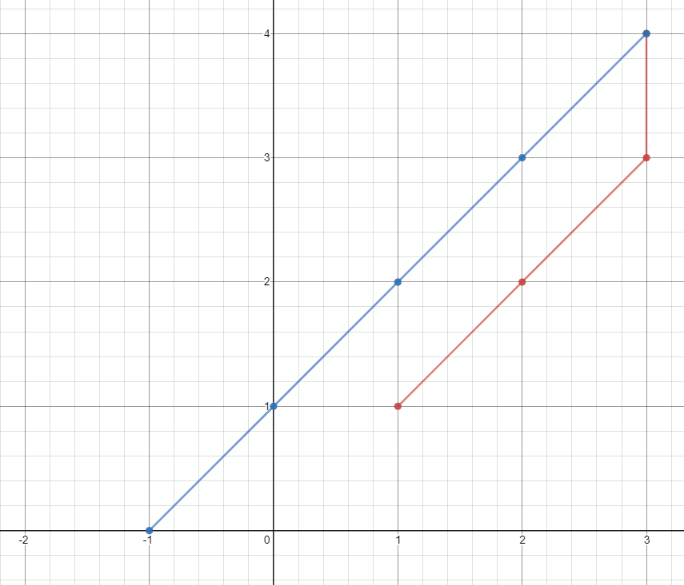1266. Minimum Time Visiting All Points
Description
On a 2D plane, there are n points with integer coordinates points[i] = [xi, yi]. Return the minimum time in seconds to visit all the points in the order given by points.
You can move according to these rules:
- In
1second, you can either:- move vertically by one unit,
- move horizontally by one unit, or
- move diagonally
sqrt(2)units (in other words, move one unit vertically then one unit horizontally in1second).
- You have to visit the points in the same order as they appear in the array.
- You are allowed to pass through points that appear later in the order, but these do not count as visits.
Example 1:
Input: points = [[1,1],[3,4],[-1,0]] Output: 7 Explanation: One optimal path is [1,1] -> [2,2] -> [3,3] -> [3,4] -> [2,3] -> [1,2] -> [0,1] -> [-1,0] Time from [1,1] to [3,4] = 3 seconds Time from [3,4] to [-1,0] = 4 seconds Total time = 7 seconds
Example 2:
Input: points = [[3,2],[-2,2]] Output: 5
Constraints:
points.length == n1 <= n <= 100points[i].length == 2-1000 <= points[i][0], points[i][1] <= 1000
Solutions
Solution 1: Simulation
For two points \(p1=(x_1, y_1)\) and \(p2=(x_2, y_2)\), the distances moved in the x-axis and y-axis are \(dx = |x_1 - x_2|\) and \(dy = |y_1 - y_2|\) respectively.
If \(dx \ge dy\), move along the diagonal for \(dy\) steps, then move horizontally for \(dx - dy\) steps. If \(dx < dy\), move along the diagonal for \(dx\) steps, then move vertically for \(dy - dx\) steps. Therefore, the minimum distance between the two points is \(max(dx, dy)\).
We can iterate through all pairs of points, calculate the minimum distance between each pair of points, and then sum them up.
The time complexity is \(O(n)\), where \(n\) is the number of points. The space complexity is \(O(1)\).
1 2 3 4 5 | |
1 2 3 4 5 6 7 8 9 10 11 | |
1 2 3 4 5 6 7 8 9 10 11 12 | |
1 2 3 4 5 6 7 8 9 10 11 12 13 14 15 | |
1 2 3 4 5 6 7 8 9 | |
1 2 3 4 5 6 7 8 9 10 11 12 | |
1 2 3 4 5 6 7 8 9 10 11 | |



